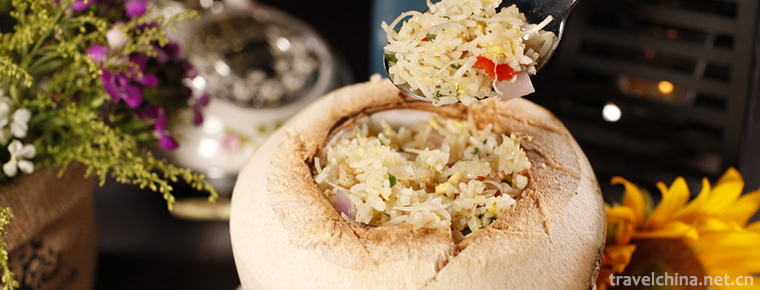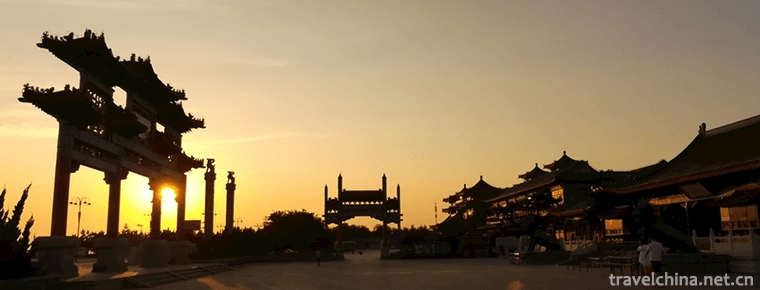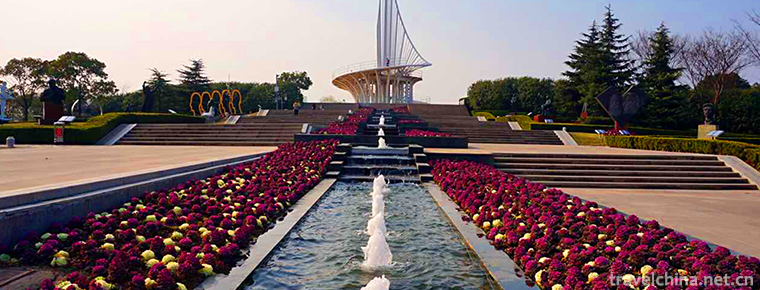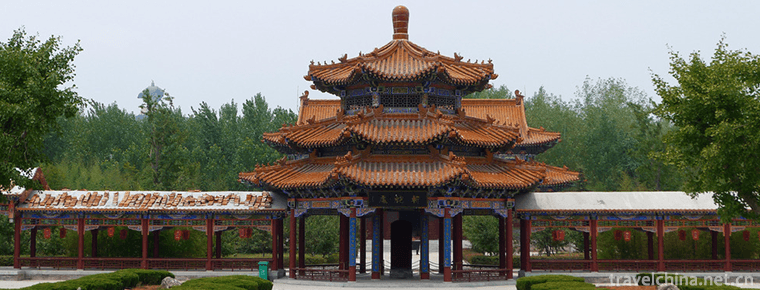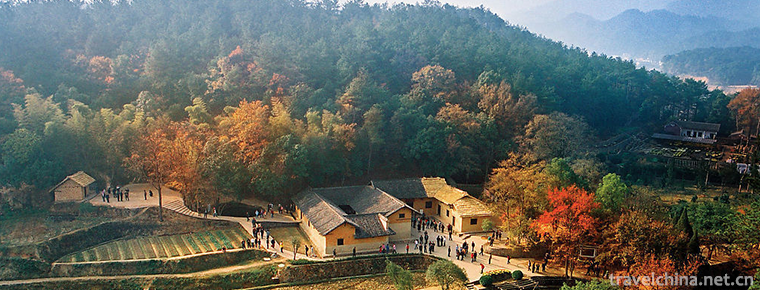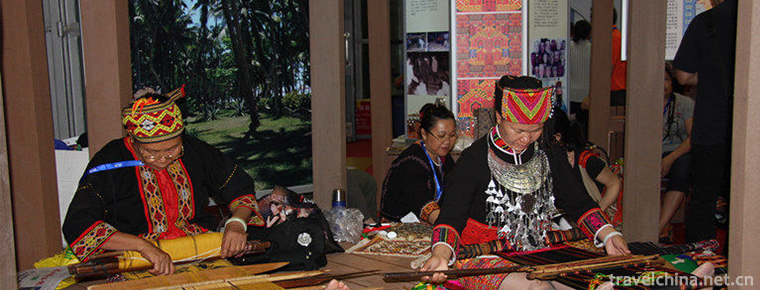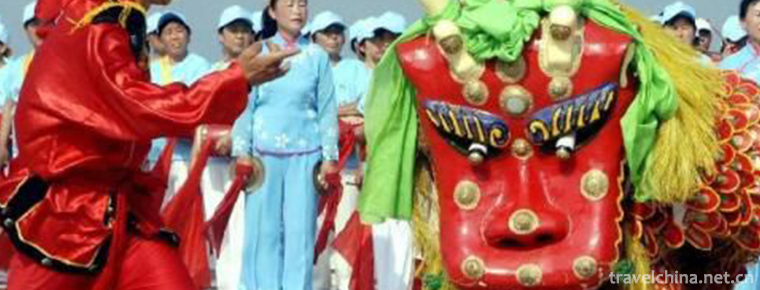Changzhou comb
Changzhou comb
Comb, also known as Chlamys, is one of the eight hairdresses in ancient China. It is a local traditional handicraft with a long history in Changzhou City, Jiangsu Province. Ancient women often used beautiful grate skips as hair ornaments on their hair buns.
Comb production is a exquisite traditional skill with excellent materials and exquisite production process. The main materials for making combs are bamboo, wood and animal bones.
The grate making industry began in the Spring and Autumn Period and the Warring States Period. Its ancestor was Chen Qizi. Changzhou grate making technology was formed in the Wei and Jin Dynasties. It has a history of more than 1600 years. Changzhou comb is famous for its strict material selection, unique technology and excellent production. From raw materials to finished products, grate skip and wood comb can be completed through 72 and a half processes and 28 processes respectively. The inheritance unit is Changzhou comb factory. Changzhou also has a famous castor lane.
On June 7, 2008, Changzhou comb was listed in the second batch of national intangible cultural heritage list with the approval of the State Council.
historical origin
Comb is two kinds of utensils, namely wood comb and grate skip. Changzhou comb production technology was formed in the Eastern Jin Dynasty, so far has a history of more than 1500 years. In the Ming and Qing Dynasties, the production technology of Changzhou comb has reached a fairly high level, and the scale of production has also exceeded the previous dynasties. "Changzhou Fu" in the reign of Qianlong in the Qing Dynasty contains: "Cutting bamboo into grates can be found everywhere in the Chaojing Gate." At that time, tens of thousands of people were engaged in the production of combs in Ximen and Nanmen of Changzhou, so Ximen had "Bijixiang" and Nanmen had "Wooden Comb Street" as place names. Since Guangxu period of Qing Dynasty, the officials of Suzhou weaving government have customized a batch of fine comb grates to Changzhou every year as imperial articles and sent them to the court of Beijing. Therefore, Changzhou comb grate has always enjoyed the reputation of "palace comb grate". In modern times, Changzhou comb has participated in many domestic and international exhibitions and expositions, and won more than 10 gold and silver medals, such as the Panama International Peace Exposition Silver Award in 1915, the Philadelphia International Exposition Gold Award in 1926, the National Silver Award in 1981, and the China Tourism Commodity Exposition Gold Award in 1991 and 2004. In foreign exchanges, Changzhou comb is often regarded as a national gift.
Palace comb name grate,
Empathy for couples; Yanling specialty, flowers blossom and pedicle. Changzhou was first called Yanling. This traditional folk song in Changzhou area sings the famous specialty wood comb and grate dustpan in Changzhou.
Comb is one of the eight hairdresses in ancient China. In ancient China, Chlamys pectinatus, together with hairpins, hairpins, winners, paces, golden hairpins, baht flowers, and raspberries, was called the eight hair ornaments. Grate skip is a kind of Chlamys. Ancient women often used exquisite castor skip as hair ornament. Xu Shen's Shuowen Jiezi in the Han Dynasty has the general name of comb and comb. The ancients thrived and grew long hair, combing grate is a necessary thing for daily hair combing. The spacing of comb teeth is looser, used for combing hair; the density of the spacing of grate teeth is used to remove dirt in the hair room, keep the hair clean, not grow parasites, and make people glow. Comb can also stimulate the scalp nerve, promote metabolism, prolong life, and can be inserted in hair as jewelry. Changzhou comb has a history of more than 1500 years since it was popular in Wei, Jin, Southern and Northern Dynasties.
The ancestor of grate industry should be Chen Qizi.
During the Spring and Autumn Period, Chen Qizi was an official and was jailed for crimes. Because of the poor living conditions in prison, Chen Qizi's head was full of lice and itchy. Once, Chen Qizi was beaten with bamboo boards by jailers, and found that bamboo boards cracked into grates. Chen Qizi used it to remove dirt and lice from his head after tidying and pressing it. This is the original grate. The ancestors of Changzhou wood combing industry are different from those of grate dustpan industry. The ancestors of wood combing industry are Helian and Huangfu, and the ancestors of grate dustpan industry are Chen Qizi. Herian and Huangfu were skillful craftsmen in the legendary Yellow Emperor era. Herian was sometimes written by Hermione and Heilian. It is said that afterwards, every year on February 18 and September 28 of the lunar calendar, comb grate industry held ceremonies to worship ancestors in order to pray for their prosperous business. The Beijing-Hangzhou Grand Canal excavated in the Sui Dynasty crossed the city from Changzhou. At that time, the whole street on both sides of the canal was full of grate comb workshops, so it was called wood comb street and grate skip lane. Standing on Wenheng Bridge, with a bright moon above your head, you can see the flower market street, the grate-dustpan lane, the moonlight, the light, the wave light, the sound of water, footsteps, the whistle and the sound of chopping bamboo merge into music. The ancients chanted, "Wenheng crosses the moon, and the grate beam lights are often the first eight sceneries in the western suburbs of Changzhou."
Fame
There is a proverb in the south of the Yangtze River:
Yangzhou Carmine Suzhou Flower is the first comb in Changzhou. Changzhou comb began in the Jin Dynasty (265-420 A.D.) and has a history of more than 1600 years. Among the cultural relics unearthed from the tombs of the Eastern Jin Dynasty in the eastern suburbs of Changzhou City, there are semi-circular wooden combs, which have a history of more than 1500 years. Changzhou Buhengshun comb shop was opened in the Ming Dynasty during the reign of Tianqi (1622). It has been handed down from generation to generation. There are five kinds of craft: carving, tracing, carving, scalding and inlaying.
In the late Ming and early Qing Dynasties, Changzhou comb has become famous in the north and south. Tens of thousands of people in Ximen and Nanmen are engaged in comb production, which is handed down from generation to generation.
There are Bijixiang and Mushu Streets in the city. They are all named after Bishun and Wang Dachang. "Changzhou Fu" has a description of "cutting bamboo into grates, everywhere in the gate of Chaojing", "Wenheng crossing the moon, grate lamp" is one of the eight sceneries in the western suburbs of Changzhou in the late Ming Dynasty, which can be seen in the history of the production of Changzhou grates.
In the Qing Dynasty, in order to flatter the Emperor, officials of the Suzhou Weaving Mansion customized a batch of high-grade combs to the Palace of Tribute in July of the Old Calendar every year. Li Lianying's Changzhou-made Ivory comb for the Western Empress Dowager's hair is still in Beijing Forbidden City. Changzhou comb therefore enjoys the name of "palace comb grate".
Changzhou comb is famous for its strict material selection, unique technology and excellent production. Changzhou comb grate works well. Tooth tip lubrication, water is not taken off. For example, wood combs are made of poplar, Photinia and jujube wood which have been used for hundreds of years and refined through 28 processes. This is not only a commodity, but also a handicraft. At the end of the Qing Dynasty and the beginning of the Republic of China, with the invention of raw lacquer gluing technology and the export of products, its popularity has spread abroad.
The exquisite Changzhou comb comb comb is a combination of practicality and decoration. It has been loved by the people for more than a thousand years. Today, the traditional comb has gradually faded out of people's daily life, but its great cultural and artistic value can not be ignored. In June 2008, Changzhou comb was selected as the national intangible cultural heritage list, which attracted people's attention again.
Millennial history
The earliest Chlamys farreri in China
When the ivory comb was unearthed in Dawenkou, Ningyang, Shandong Province in 1959, about six thousand years ago. From the unearthed combs and some folk handed down combs, the Han, Tang and Song dynasties are different. In Han Dynasty, the shape of horseshoe was longer, and the decoration was mostly cloudy pattern with feathering birds and animals; in Tang Dynasty, the shape of horseshoe was slightly wider at the lower part; and in Song Dynasty, the shape of crescent was slightly wider. Ancient combs were mostly made of wood or bamboo and precious materials, such as gold, silver, ivory, rhinoceros horn, crystal, tortoise, tin and inlaid jade beads.
According to the literature, women in Tang Dynasty liked not only combing, but also grate. In the flourishing Tang Dynasty, there were many kinds of combs, the big ones were more than two feet long. Since the Northern Song Dynasty, the texture has become more and more precious. Gold and silver armor are quite popular. Women in Song Dynasty advocated combing, not inferior to Tang Dynasty, and reached the level of intoxication. Su Dongpo, a literary giant, once wrote a poem, "When a mountain man is drunk, he falls in a crown of iron and when a brook girl laughs, she falls in rows of silver". In the Yuan Dynasty, Changzhou comb went to sea from the canal through the Yangtze River, and spread overseas along the Water Silk Road. After the Yuan Dynasty, the practice of arranging and combing gradually declined to Ming and Qing Dynasties, which was almost forgotten.
Ming and Qing Dynasties
There are more and more records about Changzhou comb in the literature. In the Ming Dynasty, Wen Heng, one of the eight sceneries in the western suburbs of Changzhou, depicted the night scene of Graben Lane by the left canal.
the Qing dynasty
By the Qianlong period of the Qing Dynasty, Changzhou City had become a scene of bamboo cutting into grates and households everywhere. During the Guangxu period, the weaving officials of Suzhou Prefecture customized 60 boxwood combs and 60 plum ridge Ivory combs to Changzhou every July of the lunar calendar, and sent them to the Forbidden City in October with 6 sets of dragon robes and 600 palace flowers as tribute to the emperor.
This is the origin of the palace comb grate. It is said that Empress Dowager Cixi is especially fond of the comb in Changzhou.
the Republic of China era
After the Revolution of 1911, the demand for combs increased sharply as people cut braids. At that time, a kind of small grate of Liu Hai grate was also popular. Many people hung small pockets with a Liu Hai grate in their pockets, which became fashionable. Later, Changzhou comb gradually spread to the world. In 1915, Lao Wang Dachang and Lao Bu Hengshun comb in Changzhou won the silver prize at Panama International Exposition. In 1926, Lao Bu Hengshun comb in Philadelphia International Exposition won the gold prize. Although comb-and-tie hairdressing is not commonly used by modern and contemporary women, some women, especially the children of minority nationalities, still follow the fine comb-and-tie hairdressing.
After liberation
Changzhou comb production has embarked on the road of collectivization and semi-mechanization.
While inheriting and developing the traditional skills of carving, drawing, carving and ironing, combing the characteristics of daily necessities, handicraft and decorative varieties, constantly pushing through the old and bringing forth the new, making comb become a daily handicraft full of national traditional style and artistic charm. Since 1981, Changzhou comb has been upgraded to three levels in two years: the first generation is simple daily necessities, the second generation is the combination of daily necessities and arts and crafts, and the third generation is art appreciation and small gifts. Among them are the "longevity comb" which integrates the function of art appreciation and health care, the "four beauties" and the "twelve hairpins of red mansions", the "butterflies", "dragons and phoenixes", "face masks" and "national dolls" as well as various kinds of grators, such as jade-like and exquisite.
As of October 2005, there were nearly 1000 professional and technical personnel engaged in comb manufacturing in Changzhou, and more than 10,000 assistant producers. The annual output of grates and combs is more than 1.3 million and 2 million. Every year, millions of grates are exported to all parts of the world in Changzhou.
From the first generation of daily comb to the second generation of daily craft comb, to the third generation of art appreciation comb and tourism comb, Changzhou comb factory created the fourth generation of hair and chest comb. These combs are lifelike in shape and gorgeous in colour. They are practical, ornamental, decorative and collected in one.
Changzhou comb grate, which used to be the palace comb grate used by the imperial court, has become the daily necessities and collections of combing and cleaning hair in people's homes.
Distribution area
Changzhou comb mainly distributes in Zhonglou District and Wujin District of Changzhou City, Jiangsu Province.
artistic characteristics
Changzhou comb is a set of sculpture, painting, ironing, painting in one of the works of art. At the same time, it is also a practical life product with health care function. The raw materials of Changzhou comb grate are mostly bamboo, ox bone and raw lacquer. The bamboo should be grown in Yinshan bamboo, which is the bamboo growing on the mountain with sunshine on its back. The main materials for making wood combs are poplar, jujube and photinia. In order to make the top-quality craftsmanship comb of poplar, more than 300 years old poplar wood should be selected. To make precious wood combs, ivory, sandalwood, horn and horn are used as raw materials. The manufacturing process of Changzhou comb is very complicated. There are 72 working procedures in the production of grate skip and 28 working procedures in the production of wood comb. Grate-making tools include large knives, picks, knives, pipe barrels, lacquer racks, paint bowls, rubber boards, sticks, toothed edges, even boards, scissors, plate files, horse-shaped files, brown brushes, choppers, saw benches, large bumps, small bumps, steel files, saw piles, direct bumping plates, even bumping boards, circular bumpers, groove bumpers, etc. Combing tools include special fixtures, planers, colliders, triangular horses, pick teeth, sockets, bamboo brushes, square roots, long saws, brackets, two-end files, horse-shaped files, hammers, bronze knives, side plate saws, crab shell planers, axes, small triangular files, hook knives, cutting knives and more than 30 kinds. The tools and materials used in the latter process are wolf pen, oil brush, special electric pen and various pigments. Five kinds of elaborate craftsmanship must be done on comb back and grate beam to make comb and grate skip of fine craftsmanship. These five techniques are: carving, drawing, carving, scalding and inlaying. Changzhou comb has more than 600 varieties in three series: practical comb series, process ornamental comb series, combined comb series and practical comb series. Changzhou comb has Chinese characteristics and artistic charm.
Inheritance genealogy
Changzhou comb has formed a scattered and numerous industry inheritance system in the Millennium inheritance. In the modern development of the comb industry in Changzhou, the four comb shops of Bu Hengshun, Lao Wang Dachang, Wang Dachang and Wang Yi Da are most famous, among which the comb made by Bu Hengshun has the highest reputation. Bu Hengshun comb shop was opened in the Ming Dynasty (1622). It was handed down from generation to generation. It was handed down to 1953 for eight generations with a history of more than 300 years. However, the inheritance of the Bo family's skills has been divided into generations, and the three ancestral skills of Lao Wang Dachang, Wang Dachang and Wang Yida have also been lost. Since the founding of New China, more than 1200 households in urban and rural Changzhou have engaged in comb production. The inheritance mode of Changzhou comb factory is mainly the inheritance of teachers and apprentices. Changzhou comb production art content is higher is "carving, drawing, carving, scalding, inlaying" five kinds of craft, a person to master two or three of the skills, need to be taught by many teachers. The inheritors of Changzhou comb include Jinsong Qun, Tang Genghe, Zheng Lisheng, Qi Zhengkang, Sun Yuxiu, Li Wenhua, Xingliang, etc. The representative figure of Changzhou comb is Jinsongqun, named by the Ministry of Culture as the third batch of representative inheritors of national intangible cultural heritage projects.
Main value
In the process of its formation and development, Changzhou comb has produced and formed a series of famous sceneries, streets and shops in Changzhou. It has also derived rich and colorful folk images and exquisite hand-painted techniques. These folk images and hand-painted techniques have become rare "living fossils" for us to study the evolution and changes of ancient and modern Jiangnan customs and social fashions. Changzhou's fine grate dustpan is simple and elegant, beautiful and delicate, pleasing to the eye. It vividly reflects the unique spiritual temperament and artistic wisdom of Jiangnan people, and has high aesthetic taste and value. Nowadays, Changzhou comb is not only popular in Southeast Asia, but also popular with people in Europe, America, Hong Kong and Macao. It plays an important role in cultural exchanges.
Related honor
The United States of America in 1915. In San Francisco to commemorate the opening of the Panama Canal. Panama Peace Exhibition, Changzhou comb exhibits, awarded by the International Award Committee to China Changzhou comb silver prize in 1926 to commemorate the 150th anniversary of the independence of the United States of America, Philadelphia held an international exposition, awarded China Changzhou comb gold prize.
The Nanyang Ministers'Property Association of Xuantong, Qing Dynasty (1910 A.D.), awarded the Changzhou Comb Gold Medal.
In the second year of Xuantong reign of Qing Dynasty (1910 A.D.), the Nanyang Advocacy Association was awarded the Changzhou comb gold medal by the Ministry of Agriculture, Industry and Commerce.
The Changzhou Industrial Award was awarded the Changzhou Comb Gold Medal in the 2nd year of Xuantong (1910 A.D.) of the Qing Dynasty.
Four years of the Republic of China (1915 A.D.) National Goods Exhibition of the Ministry of Agriculture and Commerce, awarded the Changzhou comb gold medal.
The first exhibition of Shanghai General Chamber of Commerce's commodity exhibition in the decade of the Republic of China (1921 A.D.) was awarded the Changzhou comb gold medal.
The Second Property Exhibition of Jiangsu in the Decade of the Republic of China (1921) and the Third Property Exhibition of Jiangsu in the Fourteenth Year of the Republic of China (1925) were awarded the Changzhou Comb Silver Medal.
1934 Jiangsu Provincial Goods Exhibition, awarded a medal of Changzhou comb products
In 1979, the Ministry of Light Industry of the People's Republic of China issued Changzhou Comb Quality Product Certificate
In 1979, Changzhou comb grate factory white elephant comb grate won the famous trademark certificate of Jiangsu Province.
In 1981, the National Tourist Products Domestic Handicraft Exchange Conference won the Award for Excellent Works by combing the "Romance of the West Chamber"
In 1981, the "White Elephant" Graben won the National Silver Medal of Quality of the People's Republic of China.
In 1983, "White Elephant Card" was awarded the Four New Awards for Scientific and Technological Achievements of Light Engineering in Jiangsu Province
In 1983, "Longevity Comb, Character Comb, Child Comb" won the Jiangsu Excellent New Product Award.
In 1988, Changzhou comb factory's grate skip and wood comb won the silver prize of the National Light Industry Export Exhibition.
In 1991, Changzhou comb factory was awarded "Jiali Award" for the second excellent patent implementation project in Jiangsu Province.
In 1991, Changzhou White Elephant Card was awarded the Gold Prize of the Second Beijing International Expo.
In 1991, the "White Elephant" trademark was awarded as a famous brand in Changzhou.
In 1995, "White Elephant Card" was awarded the most popular product of consumers in the Third National Urban Games.
In 1995, Changzhou comb factory "palace comb" works were selected to participate in the `95 Changzhou Folk Customs Tourist Festival Folk Art Exhibition and won a boutique award.
In 1997, Changzhou White Elephant Card was awarded the Changzhou Famous Trademark
In 1997, he was awarded the first choice of crafts for tourists and shoppers in Jiangsu market.
Tourist articles specially recommended by China (Wuhu) Tourism Commodity Expo in 2002
In 2002, the work of "comb of moulding craft" won the gold medal and the work of "comb key ring" won the silver medal in the activity of "the first China Tourist Memorial Design Competition".
In December 2002, the Nanmu crescent bamboo comb in Changzhou was selected by the Shanghai Expo Organizing Committee as a gift for the participants.
In 2003, the first Longcheng Tourist Souvenir Design Competition won the first prize for "Huangyang Craft Comb".
In 2004, "Five Generations of Ladies" comb won the silver award of "Jiangsu Da Afu" Award.
In 2005, Peking Opera Facebook was awarded the most popular tourist souvenir handicraft at China Domestic Tourism Fair.
In 2006, "Baby Drama" won the Gold Prize of Jiangsu Tourism Products Exposition every year.
In 2002, Changzhou comb, as a special gift for Shanghai's bid to host the World Expo, was presented to officials, distinguished guests and journalists, calling it "the crafts with the richest Chinese characteristics and artistic charm". In July 2004, Changzhou hand-painted comb was designated as a provincial pilot project by Jiangsu Provincial Department of Culture and Finance.
Production process
Comb production is an exquisite national skill, with excellent materials and fastidious production process. Making comb grate is mainly made of bamboo, wood, animal bones and so on. The material selection of comb grate is strict and the technology is unique. The wood for making comb grate should be made of poplar, Photinia and jujube which have been used for hundreds of years. It is refined through 28 processes, but these are not enough. More complex processes are still at the back. The grate dustpan is made of strong bamboo behind Yinshan Mountain and superior glue paint and aggregate, which are refined through 72 processes.
The comb made of poplar is especially precious and popular because of its delicate wood, clear pattern, headache treatment and itching removal. From raw material to finished product, a wooden comb needs 28 working procedures, while a grate skip has 72 and a half working procedures, among which the most exquisite carving, drawing, ironing, engraving, grinding and other processes can only be completed by traditional manufacturing methods. In the production process, it not only uses traditional techniques such as carving, drawing, carving, ironing and mosaic, but also adds the unique craft of Changzhou: silk enamel and green bamboo carving, which has a unique style. It is said that Chen Qizi, the ancestor of grate making, died at the age of 73. As the saying goes: seventy-three, ghosts come to haunt, people think this number is unlucky, so the name of grate dustpan is seventy-two processes.
1. Making grate skips. There are sawing bamboo tube, opening bamboo slices, chopping bamboo yellow, opening filament process;
2. Making grate slab. It is divided into sawing bamboo tube, beaming blank, chamfering angle and other processes.
3. Making skeleton. There are broken aggregate, boiling material, open bone, chopping billet, alum bone and other processes.
4. Painting.
5. Lacquer grate. There are dyeing, printing, coloring, lacquer grate beam and other processes.
6. Hawthorn making. There are boiling grate, lashing, picking, hanging yellow, chopping teeth, winding box hawthorn and other processes;
7. Rubber Worker. Paint mixing, alignment, broken beams, waist beams and other processes;
8. Grinding. There are drawing, cutting, drawing and grinding round head, scraping and other processes.
9. Frustrate grass. Cutting teeth, beating grass, changing broken teeth, etc.
10. Xiangtou. It is divided into shearing and grinding bone, saw head, inlay head, inlay head and so on.
11. Assignment of workers.
12. Include: renovation round head, incarnation, wax polishing.
Inheritance significance
In order to protect Changzhou comb, the relevant departments in Changzhou have taken a series of measures: carried out a comprehensive, in-depth and meticulous census of Changzhou comb, and achieved rich census results; established a Changzhou comb website to give a comprehensive introduction to Changzhou comb and its development at home and abroad; comprehensively collected and purchased the well-known old artist system scattered among the people in the Ming and Qing Dynasties, the Republic of China and the 1950s. The fine works of Changzhou comb; the compilation and publication of the book Changzhou comb; the establishment of representative inheritors database; the establishment of "Changzhou comb technology teaching class" to train a new generation of inheritors; the establishment of Changzhou comb museum, which integrates data collection, fine exhibition, process demonstration and theoretical research; and the establishment of a living inheritance base in Changzhou comb factory.


-
Coconut rice
"Coconut rice", also known as coconut boat, belongs to Hainan cuisine. Coconut is very nutritious and is a good product for both medicine and food. .
Views: 238 Time 2018-11-05 -
Sanxianshan Scenic Area
Sanxianshan Scenic Area is located in the northern end of Penglai City, Shandong Province, along the Yellow Sea. It is adjacent to Baxian Cross-Sea Scenic Area in the west,.
Views: 131 Time 2018-12-17 -
Shanghai Oriental land
Located in Qingpu District, Shanghai, Oriental Green Boat is the only large park in Shanghai that integrates outreach training, youth social practice, team activities and leisure tourism. Near the sce.
Views: 189 Time 2018-12-20 -
West Mountain Scenic Spot of Guiping
Guiping Xishan Scenic Spot, National AAAA Scenic Spot, National Geopark. Located in Guiping City, southeastern Guangxi Zhuang Autonomous Region, Xishan Scenic Spots 1 km away from the outskirts of the.
Views: 117 Time 2019-01-13 -
Mangdao Mountain Han Culture Tourist Scenic Spot
Located in Yongcheng City, Henan Province, Mangdao Mountain Han Culture Tourist Area is a national AAAAA-level scenic spot which integrates landscape sightseeing.
Views: 90 Time 2019-02-07 -
Mao Zedongs former Residence
Comrade Mao Zedong's former residence is located in Shaoshan Village, Shaoshan Township, Shaoshan City, Hunan Province. It is located in the South and north of Shaoshan Village.
Views: 154 Time 2019-02-07 -
Traditional drama
Chinese drama mainly includes opera and drama, and opera is the traditional Chinese drama. After a long period of development and evolution, Baihua Garden of Chinese opera has gradually .
Views: 146 Time 2019-04-21 -
Traditional Textile Dyeing Weaving and Embroidery Techniques of the Li Nationality
The traditional spinning, dyeing, weaving and embroidery techniques of the Li nationality, the traditional handicraft techniques of Hainan Province, are one of the national intangible cultural heritag.
Views: 91 Time 2019-05-12 -
kylin dance
Kirin dance, also known as "Wu" Kirin, is a court dance performance of the Ming Dynasty in China. It was spread among the people when the Nanming Dynasty perished. When dancing, .
Views: 97 Time 2019-06-10 -
Sichuan Zhuqin
Sichuan Zhuqin is an ancient traditional opera. The performers hold fishing drums and rap stories. The original name is Mingqin. Because its accompaniment instrument is a bamboo drum drum, it is also .
Views: 84 Time 2019-06-16 -
Life of Suining residents
In 2019, the per capita disposable income of Suining residents was 24865 yuan, an increase of 9.6% over the previous year. The per capita disposable income of urban residents was 34854 yuan, an increase of 3024 yuan over the previous year and an .
Views: 333 Time 2020-12-16 -
Yibin special dishes
Yibin people like noodles most, such as stewed chicken noodles, salty and fresh noodles, sausage noodles, beef noodles, Beijing sauce noodles, mushroom noodles, three fresh noodles, spicy chicken noodles, eel noodles, Longfeng noodles. Among them, burnin.
Views: 67 Time 2020-12-18
